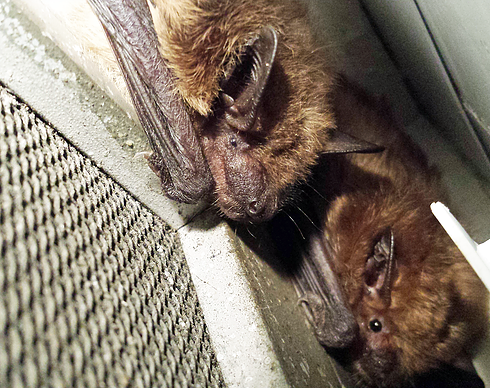The most common bat in our area is little and brown. Guess what its common name is? That’s right, the little brown bat.
Think mice with wings and you are on the right track. These bats are great at catching bugs on the wing but can’t gnaw through your walls to get inside. Instead they usually use existing holes in the house to get in.

Control Measures
There are no poisons or pesticides labeled for control of bats. Trapping or exclusion are the methods of control that are available.

The key to solving your wildlife issue is to determine what is getting in and how they are getting into your structure. We will inspect the roofline to determine where the access areas are. We can take pictures of the areas and show you exactly what is going on. Once we know what we are dealing with we can provide several options to deal with the problem. Some options might include:
-
Exclusion: We want to exclude the pest from getting into the house. If there are multiple holes we will close all of them except one. Then, we install a “one-way door or funnel”. This device allows the animal to get out but not back in again. After waiting a few days the device is removed and the final hole closed. It should be noted that this method leaves the animal(s) alive and in familiar territory so it has the best chance of finding another home.
-
Trapping: We can leave a trap or traps set for the animal(s) and once we have caught it (them) we can close up the access hole.
Control Measures
There are no poisons or pesticides labeled for control of bats. Trapping or exclusion are the methods of control that are available.

The key to solving your wildlife issue is to determine what is getting in and how they are getting into your structure. We will inspect the roofline to determine where the access areas are. We can take pictures of the areas and show you exactly what is going on. Once we know what we are dealing with we can provide several options to deal with the problem. Some options might include:
- Exclusion: We want to exclude the pest from getting into the house. If there are multiple holes we will close all of them except one. Then, we install a “one-way door or funnel”. This device allows the animal to get out but not back in again. After waiting a few days the device is removed and the final hole closed. It should be noted that this method leaves the animal(s) alive and in familiar territory so it has the best chance of finding another home.
- Trapping: We can leave a trap or traps set for the animal(s) and once we have caught it (them) we can close up the access hole.

